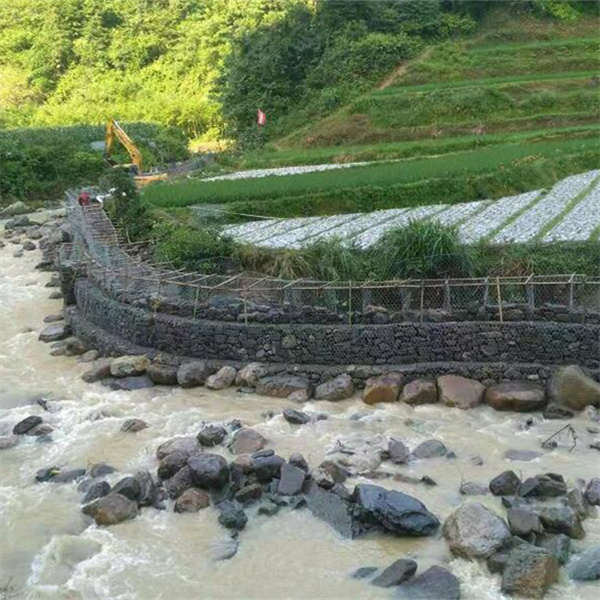Rhag . 25, 2024 20:22 Back to list
Top Tips for Building an Effective Gabion Wall by the Creek
The Best Gabion Wall for Creek Management
In recent years, the use of gabion walls has gained popularity among landscape designers, civil engineers, and environmentalists for managing creek banks and preventing erosion. Gabion walls are essentially wire-filled cages, typically made from steel or galvanized wire, that are filled with rock, stone, or other materials. This article will delve into the benefits, construction techniques, and considerations for implementing the best gabion wall for creek management.
What is a Gabion Wall?
Gabion walls serve multiple purposes. They act as structural elements for stabilizing slopes, controlling soil erosion, and creating functional yet aesthetically pleasing landscapes. Their unique design provides permeability, allowing water to flow through while retaining soil or rock, making them ideal for construction near water bodies like creeks and rivers.
Benefits of Gabion Walls in Creek Management
1. Erosion Control One of the primary benefits of gabion walls is their ability to control soil erosion. Water flow along creek banks can wear away soil over time, threatening the stability of roads, properties, and delicate ecosystems. Gabion walls provide a robust barrier that minimizes soil loss while allowing water to filter through.
2. Flexibility Gabions are adaptable to different landscaping and environmental conditions. They can be designed in various shapes and sizes, making them suitable for both small streams and large rivers. Their flexibility extends to the materials used for filling; stones, recycled concrete, or even broken bricks can be utilized, allowing for cost-effective solutions.
3. Eco-Friendliness Gabion walls are often seen as environmentally friendly solutions. They can be designed to blend seamlessly into natural landscapes, promoting biodiversity. Over time, plants and small animals can inhabit the gaps, fostering a healthier ecosystem.
4. Cost-effective Compared to traditional retaining walls, gabions can be less expensive to construct, largely due to the locally available materials that can be used for filling. Moreover, their relatively quick installation reduces labor costs.
best gabion wall creek

Construction Techniques
When constructing a gabion wall for creek management, several essential steps should be followed
1. Site Assessment Before construction begins, a detailed assessment of the site is necessary. Factors such as soil type, water flow patterns, and existing vegetation should be considered to determine the wall's design and placement.
2. Material Selection Selecting the right materials is crucial for a durable and effective gabion wall. The wire mesh must be strong enough to withstand environmental pressures, and the fill material should be adequately sized to prevent movement through the mesh.
3. Foundation Preparation The base upon which the gabion wall will be built should be leveled and compacted to ensure stability. If the site is prone to flooding, it may be beneficial to raise the wall elevation to prevent water damage.
4. Assembly of Gabion Boxes The wire cages are assembled on-site, and the filling process begins. It's important to fill the cages properly to maximize their structural integrity. Each layer should be tamped down to prevent shifting.
5. Drainage Consideration Incorporating proper drainage strategy is critical. While gabions provide some drainage capabilities, additional drainage systems may be necessary to handle excessive water pressure during heavy rainfall.
Conclusion
In conclusion, gabion walls represent an effective solution for managing creek banks and mitigating erosion. Their environmentally friendly design, flexibility, and cost-effectiveness make them suitable for various applications. By following robust construction techniques and considering site-specific factors, gabion walls can play a significant role in preserving natural landscapes and protecting against the challenges of water flow. As we continue to navigate environmental issues, the implementation of effective erosion control measures such as gabion walls will be vital in maintaining the health and stability of our ecosystems.
-
hesco-gabion-baskets-for-coastal-erosion-prevention
NewsAug.22,2025
-
longevity-and-durability-of-river-rock-gabion-walls
NewsAug.22,2025
-
how-to-integrate-gabion-3d-walls-in-urban-planning
NewsAug.22,2025
-
reno-mattress-gabion-applications-in-civil-engineering
NewsAug.22,2025
-
how-to-install-wire-mesh-for-gabion-baskets-properly
NewsAug.22,2025
-
best-materials-for-filling-a-chain-link-gabion
NewsAug.22,2025
-
Wire Mesh Thickness Impact on Gabion Wall Load Bearing
NewsAug.12,2025






